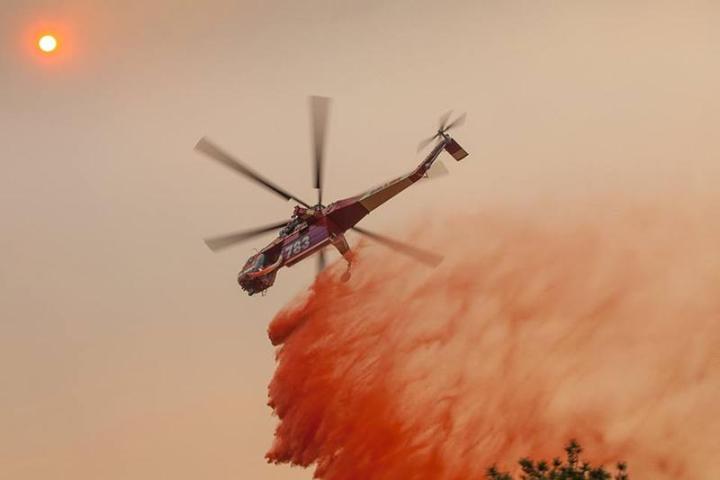
No lives were lost as firefighters tackled the blaze on Interstate 15, leading from Los Angeles to Las Vegas, but water drops were put on hold until the area was clear. Officials say the use of drones is on the rise and they pose “a major safety threat” to those tackling the fire: “When a hobby drone is flown into a fire area, incident commanders have no choice but to suspend air operations and ground aircraft until the drone is removed.”
“Fortunately, there were no injuries or fatalities to report, but the 15 to 20 minutes that those helicopters were grounded meant that 15 to 20 minutes were lost that could have led to another water drop cycle, and that would have created a much safer environment and we would not have seen as many citizens running for their lives,” San Bernardino County Fire Department spokesman Eric Sherwin told CNN.
Fire chiefs took the opportunity to repeat warnings about the Temporary Flight Restrictions (TFRs) that accompany most wildfires. Eventually, the drones left and firefighting efforts could continue. No attempt has been made to confiscate the drones or identify the pilots using them: “Our focus was on fighting the fire,” says Sherwin.
#NorthFire (Update) Firefighting aircraft has been grounded due to drone activity in the area pic.twitter.com/aVkx5Ud2JU
— SB County Fire (@SBCOUNTYFIRE) July 17, 2015
The FAA is still mulling over commercial legislation for drone use but as far as hobbyists go, you should be flying your drone below 400 feet and keeping it in sight at all times. In addition, you should “not interfere with manned aircraft operations” and stay well away from airports. Despite this code of conduct we’re seeing an increasing number of problems as compact drones become cheaper and more popular.
[Image courtesy of San Bernardino County Fire Department]
Editors' Recommendations
- FAA gives UPS’ drone delivery efforts a big boost
- Fire-starting drones are actually helping some firefighters
- Google is planning to test drones for fighting fires
- Watch Amazon’s new Ring security drone take on a burglar in first ad
- These autonomous firefighting drones are equipped with foam blasters


